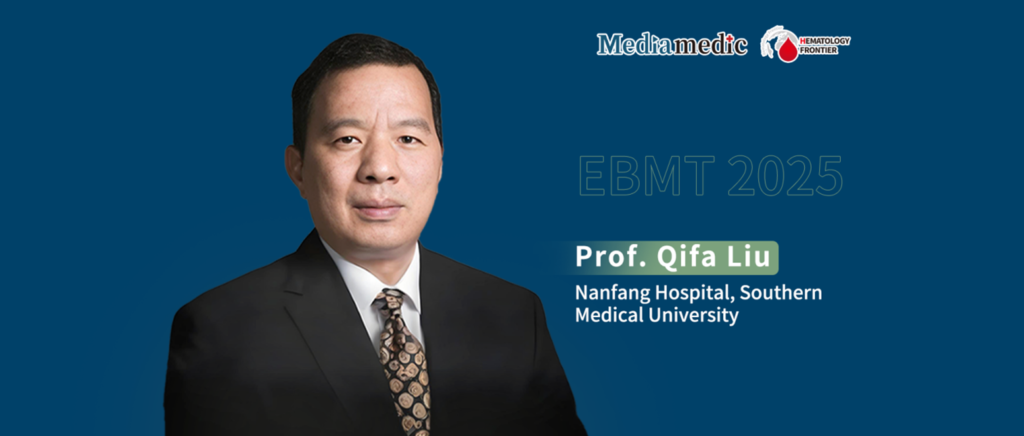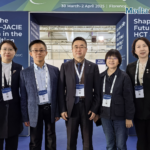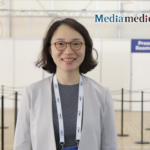
The 51st Annual Meeting of the European Society for Blood and Marrow Transplantation (EBMT 2025) was held from March 30 to April 2 in the historic city of Florence, Italy. As one of the most influential global events in the field of hematology, the Annual Meeting gathered over 5,000 experts and scholars from around the world to explore cutting-edge advances in hematopoietic stem cell transplantation (HSCT) and cellular therapy.At the Annual Meeting , Hematology frontier had the honor of speaking with Professor Qifa Liu of the Nanfang Hospital, Southern Medical University. Prof. Liu shared his insights on the latest progress in graft-versus-host disease (GVHD) prevention and treatment, particularly focusing on the innovative applications of mesenchymal stem cells (MSCs) and fecal microbiota transplantation (FMT). He also reflected on the impact of this year’s Annual Meeting on ongoing and future clinical research directions.Hematology Frontier:Professor Liu, what is your main impression from attending EBMT 2025?
Prof. Qifa Liu:China has now reached a leading international position in the fields of hematopoietic stem cell transplantation and CAR-T therapy. In terms of the number of accepted abstracts, China stood out significantly. Submissions from Chinese researchers were second only to those from Europe, placing us among the top contributors globally. This reflects our growing research capabilities and highlights how far we’ve come in this field.
In terms of content, China’s progress in CAR-T cell therapy has been particularly impressive. Many high-quality studies from Chinese teams were presented at the meeting, drawing considerable interest from the international community. These findings show that we are not only keeping up with but also, in some areas, helping to shape global research in cellular therapies.
Hematology Frontier: Your team presented several studies at this meeting, especially focused on the prevention and treatment of graft-versus-host disease (GVHD), including work on mesenchymal stem cells and Bacteroides fragilis. Could you elaborate on these studies?
Prof. Qifa Liu: Hematopoietic stem cell transplantation is a curative option for many hematologic diseases. However, its success is still limited by two major challenges: post-transplant relapse and transplant-related complications. Our studies at EBMT 2025 centered on complications, particularly GVHD, and explored new strategies in two main areas.
The first involves the use of mesenchymal stem cells (MSCs). Earlier this year, China approved its first MSC product for GVHD treatment, making it the third such product globally. Our research focused on the impact of MSCs on the overall outcome of GVHD. We found that MSCs not only effectively treat GVHD but also reduce the incidence and mortality of chronic GVHD in patients who are resistant to second-line treatments such as ruxolitinib and ibrutinib. These findings suggest a promising future for MSCs in this setting.
The second area focuses on fecal microbiota transplantation (FMT). While FMT has shown some potential in treating acute and chronic GVHD, the effects have been modest. In our study, we identified certain bacterial species, including Bacteroides fragilis, that appear to play a beneficial role by regulating the gut microbiome. These microbes may help alleviate GVHD symptoms and support better disease management. In the future, we hope to isolate and study these specific strains further, with the goal of developing targeted microbiota-based therapies for GVHD prevention and treatment.
In addition to these topics, we also shared work on preventing relapse after transplantation, which remains another important area of our ongoing research.
Hematology Frontier: One of your studies looked at Epstein-Barr virus (EBV) infections after haploidentical transplantation. Could you briefly explain its clinical relevance?
Prof. Qifa Liu: In addition to GVHD, viral infections are a major concern following transplantation. Among these, EBV and cytomegalovirus (CMV) are the most common. With the introduction of letermovir, the incidence of CMV infection has dropped significantly. However, letermovir’s immunosuppressive effect has led to an increased risk of EBV-related complications.
Post-transplant EBV infection, particularly EBV-associated lymphoproliferative disease (EBV-LPD), can be life-threatening. Our research explored the connection between reduced CMV infection and the increased incidence of EBV complications. We also looked into strategies to manage this risk more effectively. The findings offer valuable guidance for balancing antiviral therapies and reducing EBV-related mortality.
Hematology Frontier: What insights or directions from this year’s Annual Meeting do you think will shape future clinical research and practice?
Prof. Qifa Liu: Our own presentations focused on preventing relapse and managing complications after HSCT. More broadly, discussions at this year’s EBMT meeting highlighted a deeper understanding of relapse mechanisms and the identification of new therapeutic targets, which could open the door to more precise interventions.
GVHD management is also moving toward a more personalized approach. Instead of general strategies, we’re now talking about precision-based prevention and individualized treatment. This is a clear step forward for the field, and it will help guide both research and clinical decisions going forward.

Nanfang Hospital, Southern Medical University
Professor Liu is a distinguished physician-scientist, doctoral supervisor, and recipient of the National Outstanding Young Talent award.
He currently serves as:
- President of the Nanfang Hospital, Southern Medical University
- Director of the Hematology Clinical Research Center at Guangdong Provincial People’s Hospital
- Head of the Hematology Department at Nanfang Hospital, Southern Medical University
- Visiting Professor at Beijing Lu Daopei Hematology Hospital
He holds several key academic and clinical positions, including:
- Chair of the 11th Committee of the Hematology Branch of the Chinese Medical Association
- Member of the Hematology Branch of the Chinese Geriatrics Society
- Chair of the Cell and Gene Therapy Subcommittee, Chinese Research Hospital Association
- Standing Committee Member, Hematologists Branch of the Chinese Medical Doctor Association
Professor Liu has led 35 national-level research projects and over 63 provincial-level grants, including numerous key and major initiatives supported by the National Natural Science Foundation of China. He has received multiple awards for scientific and technological advancement, including one national second prize and five provincial-level first and second prizes.
He has published more than 250 SCI-indexed papers in leading journals such as Nature Communications (NCB), Signal Transduction and Targeted Therapy (STTT), Lancet Oncology / Haematology, Journal of Clinical Oncology (JCO), PNAS, Blood, Journal of Hematology & Oncology (JHO), and Leukemia.
Professor Liu also holds the Chair of Hematology at Guangdong Province and is a recipient of the Guangdong Provincial Government Special Allowance.


